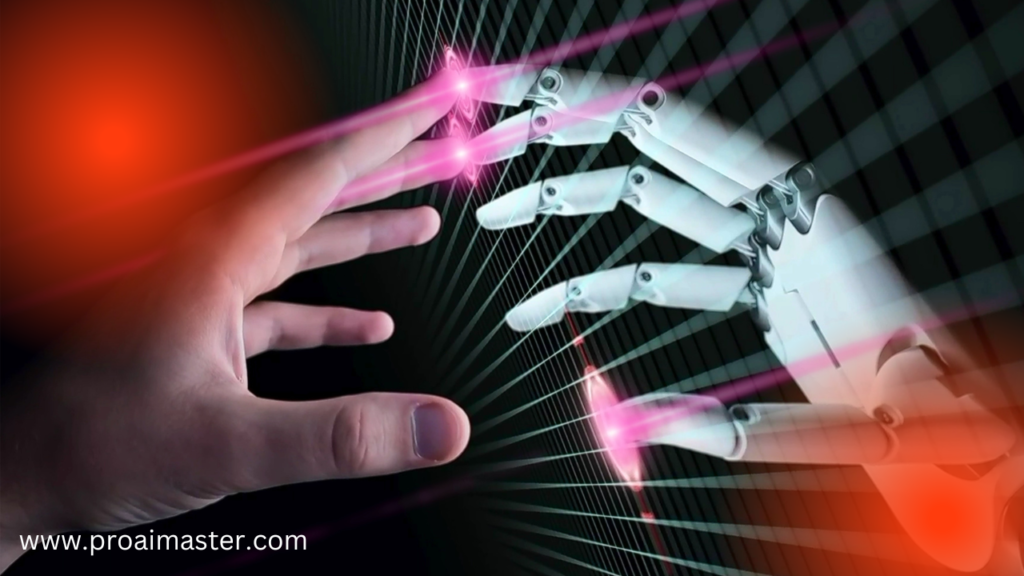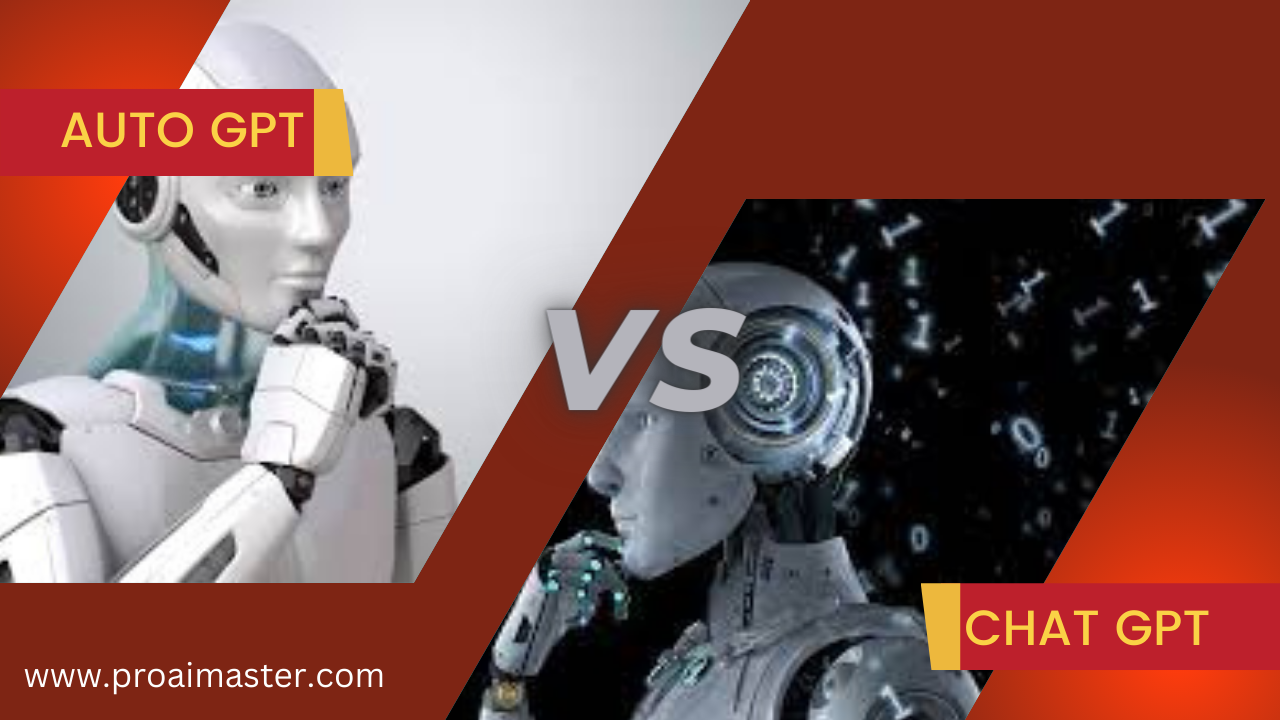Auto GPT vs ChatGPT: What’s the difference? In the realm of artificial intelligence and natural language processing, OpenAI has introduced two groundbreaking language models: Auto GPT and ChatGPT. These models have revolutionized human-computer interactions, enabling machines to generate coherent and contextually relevant responses.
Although both Auto GPT and ChatGPT are based on the GPT-3.5 architecture, they serve distinct purposes and exhibit notable differences. In this article, we will delve into the contrasting features, use cases, and underlying mechanisms of Auto GPT and ChatGPT, shedding light on their unique applications and capabilities.
Understanding Auto GPT

Auto GPT, as the name suggests, is an automated text generation model designed to produce high-quality content on a wide range of topics. It is trained using a diverse corpus of text from the internet and possesses an impressive ability to generate coherent paragraphs, essays, and articles without the need for specific prompts.
Auto GPT excels at tasks that require generating creative and informative text, making it an invaluable tool for content creation, summarization, and even storytelling. Its focus is on generating text autonomously and is not designed for interactive conversations with users.
Exploring ChatGPT
ChatGPT, on the other hand, is explicitly developed for interactive and conversational purposes. Unlike Auto GPT, ChatGPT is trained using reinforcement learning from human feedback, making it adept at engaging in dynamic exchanges with users.
It is designed to simulate human-like conversations, providing relevant and context-aware responses to user queries. ChatGPT can be integrated into chatbots, virtual assistants, and customer support systems, enabling businesses to automate their customer interactions while maintaining a personalized touch.
It caters to real-time interactions and is well-suited for applications where the primary goal is to engage users through conversational interfaces.
The Training Process
Both Auto GPT and ChatGPT share a common foundation, as they are built on the GPT-3.5 architecture. This architecture employs a massive dataset and employs a transformer-based model with multiple attention layers, allowing it to capture intricate patterns and dependencies in text.
However, the training process differs between the two models. Auto GPT is trained in a self-supervised manner, using a vast amount of diverse text from the internet. In contrast, ChatGPT undergoes reinforcement learning, where human AI trainers provide conversations and play both the user and AI assistant roles.
The trainers also have access to model-written suggestions to assist them in crafting appropriate responses, creating a feedback loop to improve ChatGPT’s performance.
Applications of Auto GPT
Auto GPT finds its utility in various domains where generating coherent and informative text is paramount. Content creators and marketers can leverage Auto GPT to automate content generation, making it easier to produce articles, blog posts, and social media updates.
It can also be utilized for tasks such as summarizing lengthy documents, generating product descriptions, or even assisting in creative writing endeavors. Additionally, Auto GPT can act as a helpful tool for researchers, providing them with extensive background information on a given topic.
Applications of ChatGPT
ChatGPT’s interactive nature lends itself to a multitude of applications. It can power chatbots on websites, handling customer inquiries, providing recommendations, and engaging in personalized conversations.
Virtual assistants can leverage ChatGPT’s conversational abilities to offer tailored responses and perform various tasks like setting reminders, checking the weather, or controlling smart home devices. With its flexible design, ChatGPT can also be integrated into customer support systems, allowing businesses to provide instant and accurate assistance to their customers.
Limitations and Challenges of Auto GPT
While Auto GPT is proficient in generating coherent and informative text, it has some limitations. Due to its autonomous nature, it may occasionally produce inaccurate or biased content since it lacks real-time feedback and human context.
Auto GPT may also struggle with understanding ambiguous or context-dependent queries, as it relies solely on pre-trained patterns. Moreover, Auto GPT may generate plausible-sounding but factually incorrect information, which necessitates careful verification when using its outputs.
Limitations and Challenges of ChatGPT
ChatGPT, despite its impressive conversational abilities, also faces certain limitations. It may occasionally provide nonsensical or irrelevant responses, as it relies on patterns learned from training data rather than true understanding.
ChatGPT can also be sensitive to input phrasing, where slight rephrasing of a question may result in a different response. Additionally, ChatGPT might have difficulty gracefully handling situations when faced with ambiguous or out-of-context queries, potentially leading to inconsistent or inappropriate responses.
Ethical Considerations in Conversational AI
The development and deployment of conversational AI models like ChatGPT raise ethical concerns. There is a need for responsible AI practices to ensure that the models do not perpetuate biases, generate harmful content, or engage in malicious activities.
OpenAI has implemented measures such as the use of reinforcement learning from human feedback to address these concerns. However, ongoing efforts are required to continuously improve and address the ethical implications associated with conversational AI.
Advances and Future Directions

As AI technology progresses, both Auto GPT and ChatGPT are likely to see further advancements. OpenAI has a history of refining and releasing improved iterations of their models.
Future developments may focus on addressing the limitations of Auto GPT and ChatGPT, such as reducing biases, improving contextual understanding, and enabling more sophisticated reasoning capabilities.
Additionally, advancements in multimodal learning, integrating visual and textual information, may enhance the models’ performance and expand their range of applications.
Combining Auto GPT and ChatGPT
There is potential in combining the strengths of Auto GPT and ChatGPT to create even more powerful language models. Integrating Auto GPT’s ability to autonomously generate informative text with ChatGPT’s conversational capabilities could result in a model that can provide detailed and contextually relevant responses during interactive conversations.
This hybrid approach may prove valuable in various domains, such as virtual assistants that can provide detailed explanations or generate informative content on the fly.
Conclusion
Auto GPT and ChatGPT, though sharing the same underlying architecture, serve distinct purposes and cater to different application scenarios. Auto GPT excels in generating coherent and informative text, making it invaluable for content creators and researchers.
In contrast, ChatGPT’s interactive and conversational capabilities make it ideal for applications involving human-like interactions. Both models represent significant advancements in natural language processing, opening up new possibilities for automation and enhanced user experiences. As AI continues to evolve, Auto GPT and ChatGPT will undoubtedly contribute to shaping a more intelligent and interactive future.
FAQs
Q1: What is the difference between Auto GPT and ChatGPT?
A1: Auto GPT is an automated text generation model designed for autonomous content creation, while ChatGPT is specifically developed for interactive and conversational purposes, simulating human-like conversations.
Q2: Can Auto GPT be used for interactive conversations?
A2: No, Auto GPT is not designed for interactive conversations. Its focus is on generating text autonomously without the need for specific prompts or user interactions.
Q3: What are the applications of Auto GPT?
A3: Auto GPT finds utility in content creation, summarization, storytelling, creative writing assistance, and providing background information on various topics.
Q4: What are the applications of ChatGPT?
A4: ChatGPT is well-suited for powering chatbots, virtual assistants, and customer support systems. It can handle customer inquiries, provide recommendations, engage in personalized conversations, and perform tasks like setting reminders or checking the weather.
Q5: How are Auto GPT and ChatGPT trained?
A5: Both models are based on the GPT-3.5 architecture. Auto GPT is trained in a self-supervised manner using a diverse corpus of text from the internet. ChatGPT, on the other hand, undergoes reinforcement learning from human feedback, with human AI trainers providing conversations and playing the user and AI assistant roles.
Q6: Are there any limitations to Auto GPT and ChatGPT?
A6: Yes, both models have limitations. Auto GPT may occasionally generate inaccurate or biased content, struggle with understanding ambiguous queries, or produce factually incorrect information. ChatGPT may provide irrelevant or nonsensical responses, be sensitive to input phrasing, and have difficulty handling ambiguous or out-of-context queries.
Q7: How do Auto GPT and ChatGPT address ethical considerations?
A7: OpenAI has implemented measures to address ethical concerns. ChatGPT, for example, goes through reinforcement learning from human feedback to reduce harmful and untruthful outputs. However, ongoing efforts are necessary to ensure responsible AI practices and mitigate potential biases and ethical challenges.
Q8: What are the future directions for Auto GPT and ChatGPT?
A8: Future advancements may focus on improving contextual understanding, reducing biases, enhancing reasoning capabilities, and integrating multimodal learning. OpenAI continually refines its models and releases updated iterations to address limitations and push the boundaries of AI language capabilities.
Q9: Can Auto GPT and ChatGPT be combined?
A9: Yes, there is potential to combine the strengths of Auto GPT and ChatGPT. Integrating Auto GPT’s ability to generate informative text with ChatGPT’s conversational abilities could result in a more powerful language model capable of providing detailed and contextually relevant responses during interactive conversations.
Q10: How can businesses and individuals benefit from Auto GPT and ChatGPT?
A10: Auto GPT can streamline content creation, assist in research, and automate tasks like summarization and storytelling. ChatGPT can enhance customer interactions, automate customer support, and create engaging chatbot experiences, ultimately improving customer satisfaction and efficiency for businesses.

Muhammad Ahmad is a dedicated writer with 5+ years of experience delivering engaging and impactful content. He specializes in simplifying complex topics into easy-to-read articles.


